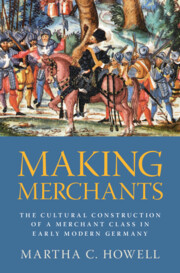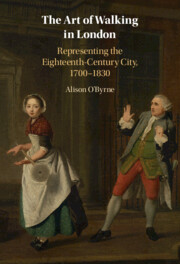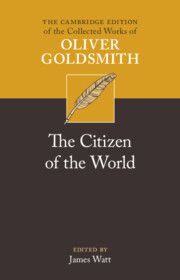Refine search
Actions for selected content:
133 results
Introduction
-
- Book:
- Making Merchants
- Published online:
- 19 September 2025
- Print publication:
- 09 October 2025, pp 1-6
-
- Chapter
- Export citation
12 - Capitalism and Class
- from Part III - Merchants in the Round
-
- Book:
- Making Merchants
- Published online:
- 19 September 2025
- Print publication:
- 09 October 2025, pp 186-209
-
- Chapter
- Export citation
2 - The Sociocultural Context
- from Part I - The Selbstzeugnisse in Context
-
- Book:
- Making Merchants
- Published online:
- 19 September 2025
- Print publication:
- 09 October 2025, pp 18-23
-
- Chapter
- Export citation
8 - Commerce and Money Management
-
- Book:
- The Experience of Work in Early Modern England
- Published online:
- 19 September 2025
- Print publication:
- 09 October 2025, pp 285-314
-
- Chapter
-
- You have access
- Open access
- HTML
- Export citation

Making Merchants
- The Cultural Construction of a Merchant Class in Early Modern Germany
-
- Published online:
- 19 September 2025
- Print publication:
- 09 October 2025
6 - Financial Administration, Market, and Merchants
- from Text 6 - Regulating Markets and Government Grain Purchases
-
-
- Book:
- Chinese Statecraft
- Published online:
- 17 July 2025
- Print publication:
- 31 July 2025, pp 96-112
-
- Chapter
- Export citation
Introduction
-
- Book:
- The Art of Walking in London
- Published online:
- 19 December 2024
- Print publication:
- 23 January 2025, pp 1-25
-
- Chapter
- Export citation
Chapter 1 - Mobility and Spectatorship in the Early Eighteenth-Century City
-
- Book:
- The Art of Walking in London
- Published online:
- 19 December 2024
- Print publication:
- 23 January 2025, pp 26-63
-
- Chapter
- Export citation

The Art of Walking in London
- Representing the Eighteenth-Century City, 1700–1830
-
- Published online:
- 19 December 2024
- Print publication:
- 23 January 2025
10 - Death and Dismemberment
- from Part III - Collapse
-
- Book:
- Three Consuls
- Published online:
- 31 October 2024
- Print publication:
- 21 November 2024, pp 268-299
-
- Chapter
- Export citation
As relações transimperiais na fronteira sul da América: Governo, comércio e alfândega (c. 1722–c. 1726)
-
- Journal:
- Latin American Research Review ,
- Published online by Cambridge University Press:
- 29 October 2024, pp. 1-16
-
- Article
-
- You have access
- Open access
- HTML
- Export citation

The Citizen of the World
-
- Published online:
- 22 October 2024
- Print publication:
- 07 November 2024
13 - The Essay and the Rise of the Novel
- from Part II - The Great Age of the British Essay
-
-
- Book:
- The Cambridge History of the British Essay
- Published online:
- 31 October 2024
- Print publication:
- 04 July 2024, pp 183-198
-
- Chapter
- Export citation
6 - Kings and Merchants
- from Part III - The Spanish Case Studies
-
- Book:
- Balancing Strategy
- Published online:
- 25 April 2024
- Print publication:
- 02 May 2024, pp 129-148
-
- Chapter
- Export citation
1 - Plural Beginnings
-
- Book:
- Sharing Freedom
- Published online:
- 28 March 2024
- Print publication:
- 04 April 2024, pp 31-74
-
- Chapter
- Export citation
Chapter 2 - Maria Hadfield Cosway’s ‘Genius’ for Print
- from Part I - Self-Presentation and Self-Promotion
-
-
- Book:
- Female Printmakers, Printsellers, and Print Publishers in the Eighteenth Century
- Published online:
- 14 March 2024
- Print publication:
- 21 March 2024, pp 25-39
-
- Chapter
-
- You have access
- Open access
- HTML
- Export citation

Female Printmakers, Printsellers, and Print Publishers in the Eighteenth Century
- The Imprint of Women, c. 1700–1830
-
- Published online:
- 14 March 2024
- Print publication:
- 21 March 2024
-
- Book
-
- You have access
- Open access
- Export citation
2 - Production, 1000–1500
- from Section II - The Medieval Economy, 1000–1500
-
-
- Book:
- An Economic History of the Iberian Peninsula, 700–2000
- Published online:
- 22 February 2024
- Print publication:
- 29 February 2024, pp 47-75
-
- Chapter
- Export citation
8 - International Trade and Commerce, 1000–1500
- from Section II - The Medieval Economy, 1000–1500
-
-
- Book:
- An Economic History of the Iberian Peninsula, 700–2000
- Published online:
- 22 February 2024
- Print publication:
- 29 February 2024, pp 199-220
-
- Chapter
- Export citation
Chapter 6 - Credit and Credulity
-
- Book:
- Mary Wollstonecraft and Political Economy
- Published online:
- 15 February 2024
- Print publication:
- 22 February 2024, pp 185-214
-
- Chapter
-
- You have access
- Open access
- HTML
- Export citation
